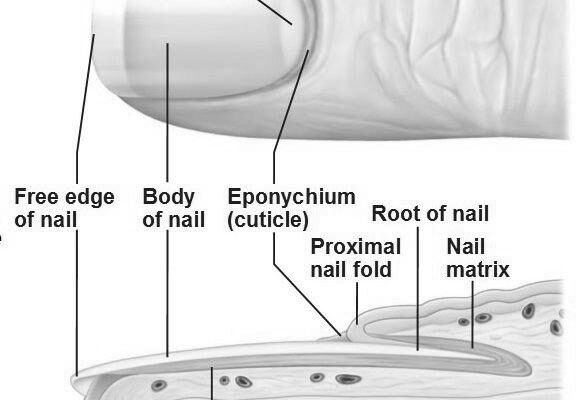- Why Do Nails Go White at the End of Them?
- Leukonychia
- Beau’s lines
- Splinter hemorrhages
- Fungal infection
- Systemic disease
- How to Heal Short Nail Beds After Years of Nail Biting
- Damage to the tissue around your nails
- Make yourself aware of when you are biting your nails.
- Stopping yourself from doing it
- Ways to make your nail beds appear longer
Why Do Nails Go White at the End of Them?
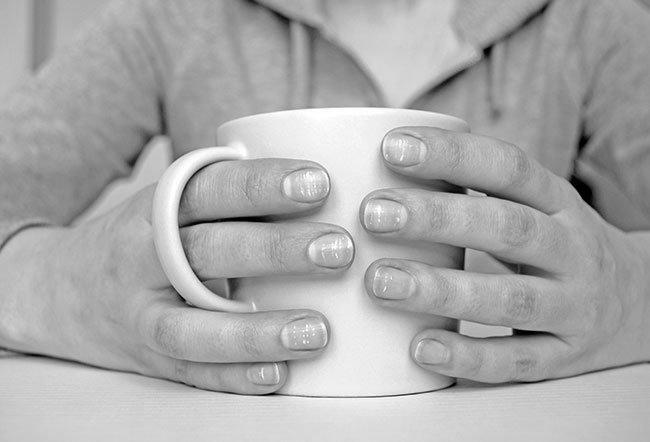
If you have noticed your nails turning white at the ends, you probably wonder why they’re doing this. If you see other changes in your skin and hair, you should consider getting medical attention. Listed below are some common reasons your nails are turning white at the end. Make sure to seek professional help if you notice other symptoms. If you’ve noticed that your nails have changed color, consider getting a checkup to rule out a bacterial or fungal infection.
Leukonychia
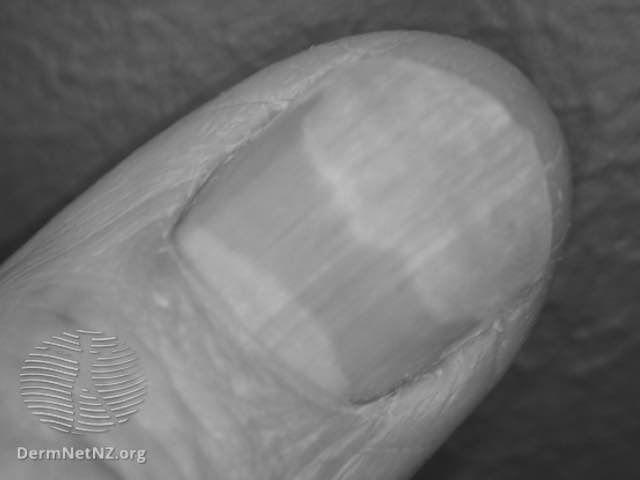
There are many causes of total white discoloration of the nails. The most common are chemotherapeutic drugs, nutritional deficiencies, systemic diseases, and infections. The treatment of leukonychia depends on identifying the underlying systemic disease. A physician may decide to perform a nail biopsy if the condition persists or worsens. The diagnosis and treatment of leukonychia depend on whether the disorder is acute or chronic.
Although white nails are not a cause for alarm, they can mask systemic severe or congenital conditions. The white color of the nail can be caused by abnormalities in the nail bed or nail plate, and differentiating between these two conditions is crucial for diagnosis and management. This article reviews data for several types of leukonychia and identifies the appropriate workup for each.
Other causes of white nails at the end are trauma, certain diseases, and other conditions. Trauma can cause white nails, known as Mees lines. The condition may be caused by manicure mistakes, pressure on the free edge of the nail plate, or direct occupational contact with an aggressive substance. Fortunately, there are treatment options available for this condition. Listed below are some of the causes of white nails at the end.
Pseudoleukonychia occurs when the nail matrix is damaged, resulting in a white nail unit. Other causes include keratin deposits from nail varnish or onychomycosis. In addition, some forms of leukonychia are associated with severe illnesses such as kidney failure, arsenic poisoning, and pneumonia. Treatment for these cases will depend on the underlying cause and the severity of the symptoms.
Beau’s lines
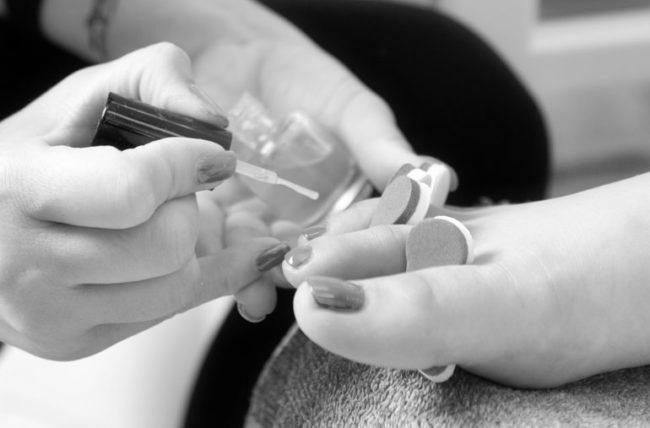
Beau’s lines have many causes, including bacterial infections, autoimmune diseases, thyroid disorders, and heart diseases. It is difficult to determine which reason of Beau’s lines is responsible for your particular case. In some rare cases, it can be caused by other illnesses, including malnutrition. In other cases, the systemic disease can cause this condition, including high fever, syphilis, pneumonia, and malaria.
It’s important to remember that there’s no single reason why Beau’s lines appear on your nails. They’re caused by a temporary disruption in the development of the nail matrix. Some treatments, such as chemotherapy, can temporarily prevent the nail matrix from forming correctly. While they may appear unsightly, the problem isn’t contagious. In any case, you shouldn’t try to diagnose the cause yourself. Instead, ask your nail tech to refer you to a physician if you suspect you’ve developed this condition.
If your beau’s lines appear frequently, you may have a medical condition. If the pain is constant or you have multiple lines on one nail, you should see a doctor. The situation is not life-threatening, but you should see a doctor if the pain is persistent or becomes too uncomfortable. If you don’t treat the cause of your problem, it may lead to more severe problems.
If the appearance of Beau’s lines does not accompany your nail changes, the most likely reason is an underlying condition. A low amount of zinc in your body can lead to extreme brittleness in your nails, and you need to consult your healthcare provider to rule out a severe health issue. It would help if you also were careful when using nail polish. It may indicate that you have a blood disorder or are underweight.
Splinter hemorrhages
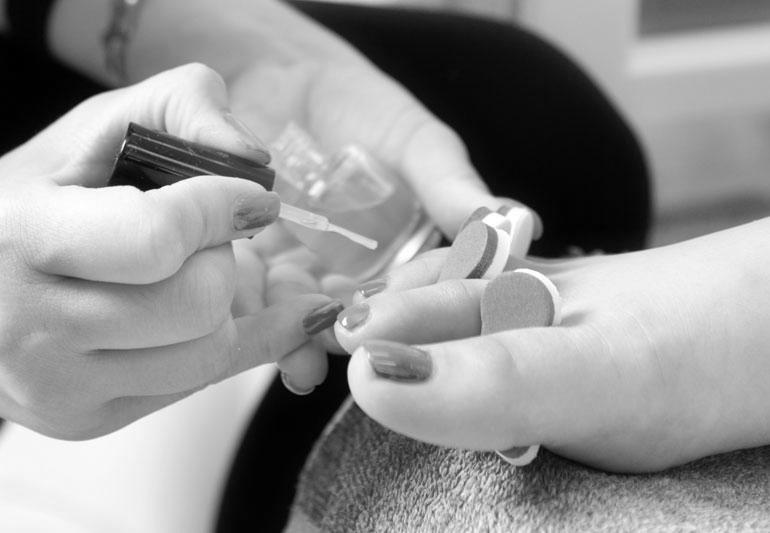
It’s not entirely clear why some nails go white at the end, but several possible causes exist. Some people have genetically inherited white nails, while others can develop them due to a medical condition. Half-and-half nails, or “Terry’s nails,” are white in the central portion with a pink ring at the distal end. Some people have these abnormalities due to kidney disease, cirrhosis, congestive heart failure, or diabetes mellitus.
While there are a few causes of white nail spots, the most common cause is trauma to the fingernail. Trauma to the fingertip or nail can damage the matrix, a layer of cells located at the fingernail base. These white spots can be challenging to detect, but trauma symptoms are easily diagnosed. If the white spots on your nails have any of these symptoms, you should immediately schedule a doctor’s visit.
Other causes include liver failure, syphilis, and other systemic conditions. If you’re worried about the underlying health of your nails, you should see your primary care physician or dermatologist for a professional diagnosis. It will give you peace of mind and will make you feel better. In the meantime, don’t neglect your nails. They are an essential part of your body, so take care of them!
Another cause of white or yellow nails is a fungal infection. This condition can occur due to nail trauma, such as working in water. It can also be an early symptom of hyperthyroidism, a disease in which the body’s thyroid gland speeds up its metabolism. Here are a few signs of onycholysis that your doctor can detect through physical examination. If the symptoms persist, your doctor may recommend a blood test.
Fungal infection
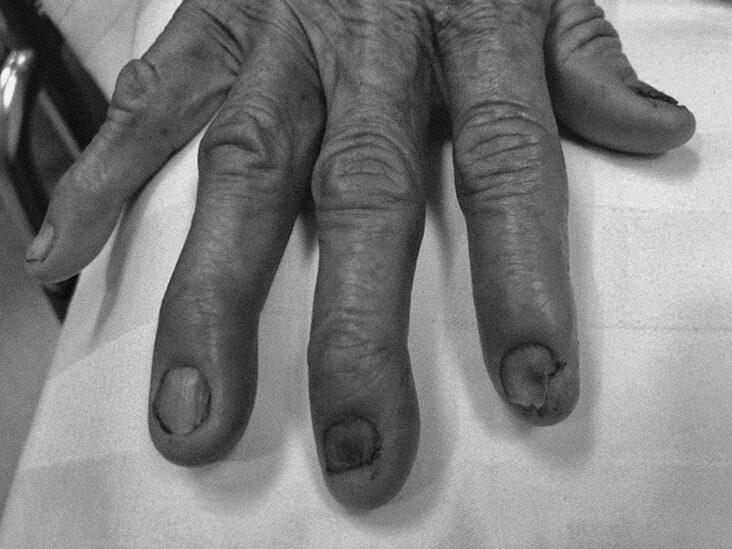
Fungal nail infections are treatable with oral prescription medicines. However, these medicines are costly and not always covered by insurance. If you notice your nails turning white, don’t panic! It’s not a major medical problem and can be addressed at your doctor’s visit. The changes to your nails can be temporary or permanent and may take several months to go away. However, it is essential to discuss your symptoms with your healthcare provider as soon as possible.
If you notice a white spot at the end of your nail, don’t panic! It’s perfectly normal and will disappear in time. If you notice a white area more frequently, you should see a dermatologist get a proper diagnosis. Often, white patches are caused by an underlying systemic illness. Treatment for white patches in your nails will depend on the cause of the discoloration.
The cause of white spots on your nails may be hereditary or can be a symptom of a serious underlying health problem. In some cases, white spots on your nails are a symptom of more severe diseases, such as total leukonychia. In some cases, the white spots may appear as narrow, white lines across the nail plate or in long longitudinal stripes. Ultimately, with proper medication.
Another cause of white nails may be an injury. In these cases, a pin will appear white but still have a punk band along the top of the nail bed. This condition is known as Terry’s nails. The white half-moon area at the base of the nail, also known as the lunula, is a vein change hidden beneath the nail bed.
Systemic disease

Systemic diseases of the nails can affect both fingernails and toenails. A white discoloration in the area below the pin can be an early sign of a more severe condition. A bacterial infection can also cause the nails to detach from the nail bed. In some extreme cases, the infection can even lead to nail loss. Other causes of white nails include viral warts, heart valve infections, and kidney disease. Nutritional deficiencies can also cause yellow nails.
There are two kinds of leukonychia – partial and actual. Partial leukonychia occurs when the nail plate is affected. In true leukonychia, the white areas are unaffected by pressure and grow out with the nail. The color of the nail plate is altered in apparent leukonychia, but the white space does not grow out. If the condition persists, treatment will vary depending on the underlying cause of the white nail.
White spots on nails may be caused by many different conditions, including an injury or behavior. A physician can diagnose these diseases and prescribe medication for you to cure the white spots. During the initial stages of white spots, the white spots may appear as small dots on the nail or as more significant, irregular spots all over the nail plate. Sometimes, white spots on nails may occur due to matrix injury, although it takes four weeks for the white dots to appear.
Nail abnormalities can be indicative of more severe conditions. Nail abnormalities may be an early sign of AIDS in HIV-positive pediatric patients. Capillary loops on the nails are also signs of systemic disease. The distal fold of the nail is a landmark for diagnosing hypertrophic osteoarthritis, a condition that causes pain and inflammation. It can also be a symptom of systemic lupus.
How to Heal Short Nail Beds After Years of Nail Biting
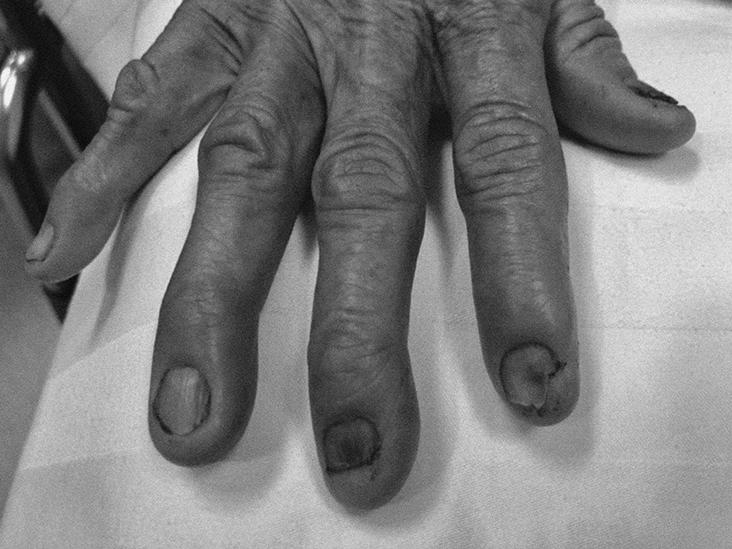
This article will discuss how to stop and heal short nail beds caused by nail-biting and how to prevent yourself from doing it in the future. Firstly, you must be aware of the damage that nail-biting causes to the tissue surrounding your nails. Next, you need to stop biting your nails once and for all. Lastly, learn ways to make your nail beds look longer. We hope this article was helpful.
Damage to the tissue around your nails
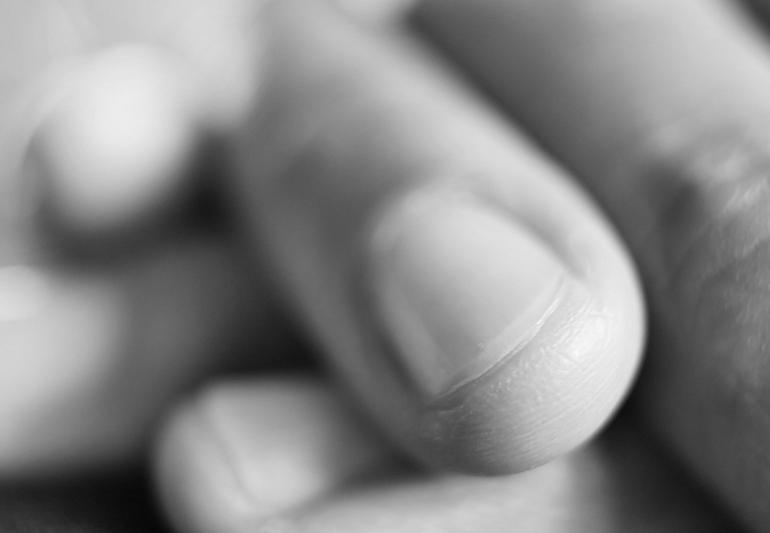
Many people who bite their nails are at risk of developing bruxism, a disorder characterized by unintentional grinding of the teeth. It can lead to facial pain, receding gums, and even tooth loss. In addition, chronic nail-biting can lead to the growth of the wrong or irregular nails. If you have a nail-biting history, it’s worth consulting a doctor.
When bacterial infections penetrate the folds of the nail, it causes inflammation. Acute paronychia develops quickly and typically causes erythema, edema, and tenderness around the nail fold. On the other hand, chronic paronychia is more established and may lead to cuticle separation. Whether it’s caused by nail-biting or some other factor, doctors will want to know the exact cause of the infection.
Aside from physical health concerns, nail-biting is also a symptom of a mental problem. People prone to biting their nails should see a doctor as it can be a symptom of anxiety, obsessive-compulsive disorder, or stress. Damage to the tissue around your nails after years of nail-biting can lead to other health problems, including dental problems, stomach infections, and even chronic ingrown nails. Fortunately, you can do a few things to treat nail-biting and reclaim your beautiful hands.
The bacterial infection is often caused by Staphylococcus aureus. Acute paronychia is similar to chronic fungal infections. Symptoms include swelling of the folds of the nail and green discoloration. The disease can lead to a complete loss of the nail plate or partial separation in severe cases. The condition is treatable with topical neomycin.
You can avoid the risk of infection by getting regular manicures to keep the tissues around your nails in top shape. Another option is wearing artificial nails to avoid nail-biting triggers. Band-Aids are another excellent solution to keep your nails in good condition. The damage to the tissue around your nails after years of nail-biting is not permanent. But you should seek medical advice as soon as you notice any blemishes.
Make yourself aware of when you are biting your nails.
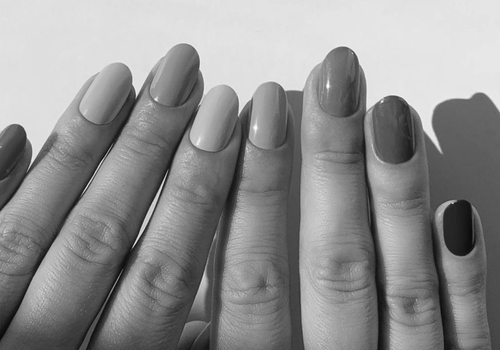
While there are many ways to heal short nail beds after years of nail-biting, you may not be able to do it overnight. Nails are never truly gone, and you cannot just ignore them. If you find yourself grabbing a piece of your pin to bite, you may need outside help. In addition to short nail beds, nail-biting can be a symptom of severe mental health issues, such as obsessive-compulsive disorder, stress, or anxiety.
You can try the “biting-awareness” method to stop the behavior, which involves making yourself aware of when you are biting your fingers. This method may take months or even years, so be patient. However, once you stop biting your nails, you may be able to heal short nail beds after years of nail-biting. You can also try some alternative treatments.
Exercise is another excellent way to cure short fingernails. Getting daily exercise will reduce the stress and tension you experience from nail-biting. Exercising your nails will heal your short nail beds and give your nails a new lease on life. It’s much easier than you might think, and the benefits are worth it. However, there are no guarantees, but a little exercise will go a long way.
Another method involves covering your hands. You can protect your nails with a piece of paper or wear colored stickers. This method works best when you know when you are biting your nails. It can also be a deterrent to making yourself stop biting your nails. You can also use stress balls, worry stones, and even chewing gum.
Habit reversal is a great way to heal your short nails after years of nail-biting. By replacing bad habits with healthy ones, you can get rid of nail-biting once and for all. The key is awareness without judgment. It will allow you to tune in faster and modify your behavior accordingly. You can also start to think of alternative activities, such as using a fidget toy, stress ball, or colored stickers, that will distract you from the urge to bite your nails.
Stopping yourself from doing it

First, it is imperative to recognize the triggers of nail-biting. These could be physical or emotional, such as boredom, stress, or other factors. Once you have identified these triggers, you should devise strategies to avoid those situations. Whether you stop biting one set of nails at a time or all at once, your goal is to be free of the habit.
Over-biting nails lead to an open wound in the cuticle. This wound will take a few days to heal, while the hard skin around the nails can take weeks to heal. To help your short nails heal, you should avoid biting them and use cuticle oil and moisturizer around them. However, if your nails have been severely bitten, you may never have a regular nails again. This condition is called onycholysis.
It is also essential to develop self-awareness and healthy habits in children to overcome the effects of nail-biting. A self-motivating book or play aimed at children will teach children to learn to stop bad habits. Try to keep a positive mindset, and you’ll find that your kids will soon grow out of this habit. You can also encourage them to try out new hobbies and activities. If you can’t find a professional, try doing it yourself.
Whether you are just starting to heal your short nails or have been affected by years of nail-biting, many solutions exist. Taking self-awareness measures to stop nail-biting is one of the most effective methods for healing damaged nails. By developing self-awareness, you can identify the triggers and use proper therapy and counseling. If you’ve suffered from years of nail-biting, it may be time to seek professional help to cure your damaged nails.
One way to heal short nail beds after years of a nail-biting habit is to eat foods rich in zinc. Fish, eggs, and chicken contain zinc, and they also provide Vitamin D, B12, and vitamin C. Also, you should be well-hydrated. Use hand cream on your hands and drink plenty of water and fresh juice. It would help if you also used a good hand cream on your nails.
Ways to make your nail beds appear longer
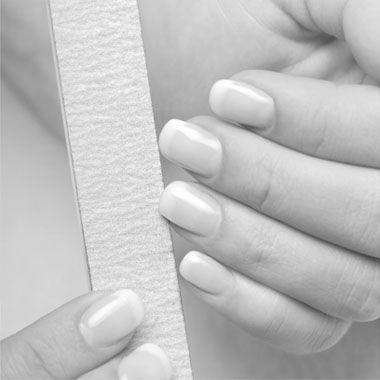
You probably think that your nail beds will grow naturally over the years, but that’s not always the case. Habits such as nail-biting can cause your nail beds to get short. But don’t despair! You can make your nail beds longer! Here are a few tips! Keep reading to discover how you can lengthen your nails. And don’t forget to apply these tips right away!
First of all, make sure you moisturize your fingernails! The base of your nail bed is your cuticles. Soak them in warm water for a few minutes and gently push back your cuticles. Using a cuticle pusher will also make your nail beds look longer! And remember that nail beds are determined by genetics. But there are several ways to make your nail beds look longer after years of nail-biting.
First, consider getting some nail enhancement. You might have a flat or wide nail bed if you bite your nails. You want to ensure that your tips do not cover more than half or a third of your nail bed. You can use tip cutters to help shorten your information to cover more of your nail. Also, try using clear acrylic to help protect your nails from a breakage at the bridge points. If you’re a nail-biter, try wearing an all-pink manicure or going with your natural color.
Besides cutting your nails, your diet plays a significant role in nail health. A good diet includes plenty of fruits and vegetables, and a proper nutritional plan can help your nails become more robust and longer. You can also try using pin strengthening oils. These oils can help your nails grow back faster. It would help if you tried to eat at least one portion of these foods every day to promote healthy nail growth.
